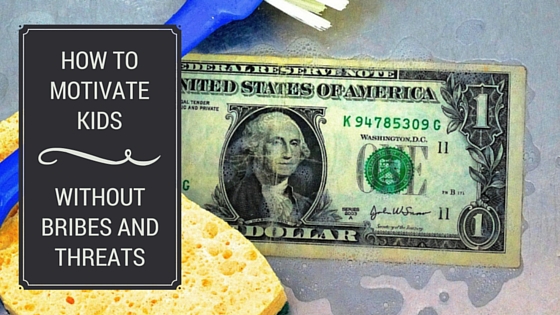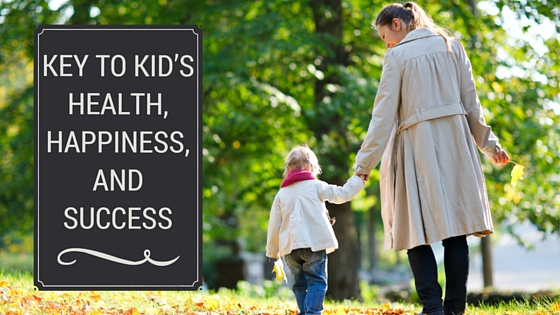Hi there!
I was having a cup of tea with a girlfriend the other day and she was talking about how her kids just don’t really seem to appreciate what she does for them.
She said it’s not always like this, but there are times when her daughter will look at a closet full of clothes and say that she has “nothing to wear”.
Or my friend will make breakfast for her daughter and the daughter will say, “You didn’t make it right!” and throw it in the trash.
Here’s the thing about this situation.
I know these kids.
They are great kids.
This is a awesome mom and a wonderful family.
And (confessional time)…. There are times when my own kids don’t have as much gratitude as I’d like, for what they have or what we do for them. And I’m also a great mom.
Same thing in your house too, huh?
So how do us superb parents help our kids–who are also awesome–develop gratitude and thankfulness?
1. Develop a gratitude practice personally and with your family
Kids imitate what they see. If they hear you being thankful for the blue sky, green grass, the food that you have to eat, your home, and your clothes, they will begin to be thankful for those same things and even more. During a meal, having each family member share what they are thankful for, is a wonderful family practice. Challenge children to think of something new each time.
2. Acknowledge and appreciate each other
Our role modeling is also important when it comes to our relationships. Jason and I frequently acknowledge each other for doing small and large things (making dinner, taking out the trash, or planning a wonderful birthday surprise). We say it something like this… “Thank you for (make an observation). I felt (state the feeling) because it really helped me met my need for (state the need).” Our children have picked up the same language.. Sometimes during family time we will acknowledge each other. But the best time to use this is at the end of a rough day or after an argument. It’s magical.
3. Being a “helping family”
Sometimes children, understandably, don’t see all the things that their parents do for them to help the family function. Without us parents acting like a victim, or a jerk about it, we can help children see how each person contributes in their own way to the family. How each of us is a part of a “helping family”. Steven Covey, in Seven Habits of Highly Effective Families, tells a story about how he did this with his own family. I’ll paraphrase it here. During a family meeting he said, “Ok, who wants to make the money? All right, I’ll do that. Drive the car to school, sports, and friends’ houses? That’s me too. Who wants to pay the taxes and the bills? Ok, kids, I can handle that too. Who can help with the dishes?” And he waited for one of his kids to respond. “Set the table?” He waited again. And they split up the chores in the house, with each person knowing that they all contributed something valuable and unique to the family. Certainly, young children might need help and support with their chores (older kids might too). Children who participate with family chores will naturally begin to appreciate all the other things that their parents do for them.
4. “Pay to play”
Starting when our children were 7 years old, they often times have paid for a portion of their extra curricular activities–theatre classes, music lessons, horseback riding, sports activities, school trips, and summer camps. When our children want to do something we talk about what is appropriate for us to contribute and for them to contribute. They have earned money by doing work around the house, selling homemade crafts and baked goods, babysitting, saving up birthday and Christmas money, and even bartering. This works well for a number of reasons. Our children really appreciate their extra-curricular activities because they have helped pay for them. They are selective and thoughtful about what they want to participate in. They rarely get into something and decide to quit. And they have developed some entrepreneurial skills, like planning, budgeting, market testing, sales, customer service, and marketing. It’s been a win-win all around. And, because there is flexibility with this arrangement, if there is ever something that Jason or I really want them to try then we can just offer to pay for the whole thing.
5. Birthday parties
We have a set budget for how much we spend celebrating a birthday. The girls know in advance how much money they will receive from us. We tell them that they can either use that money to have a party and invite friends OR we can use it to buy them gifts and have a smaller family-only party. Then they get to decide how many people to invite, what activities they want, if they want to serve their guests homemade or store bought food, what decorations they’d like and anything else. They research different options and budget it out. And so far it’s worked out really well.
6. Volunteer and travel
A couple of times in our classroom, we took field trips to see things in “not so nice” parts of Los Angeles. Jason and I believe that, for a child who is old enough and mature enough, there is nothing like travelling to other parts of town OR serving people who are less fortunate, to bring some perspective and “real life” experience to our children. Be prepared for your children to ask questions about what they see, and to give them simple, honest answers. And do you know what all that perspective gives your children? You guessed it…. Gratitude!
I hope these ideas are useful for you and your family.
Lastly, in the spirit of the season of gratitude, there is something I want to thank YOU for.
Thank you for opening my emails, reading my blog posts, and writing back or leaving a comment. Thank you for trusting me and sharing a little bit of your life with me. I am always touched when I find out that something I said made a life a little easier, made a child smile, or made a relationship a little sweeter.
Thank you for being in my life! You make it sweeter!
In gratitude,
Cecilia










Thank you for the kind advice,this will go a long way.
You’re welcome, Pebetse!
Miki, that makes sense to us too. We role model saying thank you, or we say it for our kids and it works great!
I know someone in our community who every year before their son’s birthday goes through his toys to cull out little used toys to give away. Birthdays and holidays where you know your kids will get a lot of gifts are good times to look for things to donate. These also have concrete dates so there is a deadline and specific reason “let’s clear out some of your unused toys so you have space for the new toys you will be getting.” Also don’t just think about giving to charity, you can also invite people in your local community to take (free yardsale) so your kids can better see how happy other kids are to get their old toys. If your kids are younger, you can also think about donating toys to local preschools, churches, etc. for their children’s groups. This might be especially useful for toys they rarely use but want to still play with sometimes, since if they attend the Church or school they will still have access to the toy, just not as often.
Also, rather than just asking relatives to give fewer gifts, give specific examples about what to give instead. If they can’t think of something on their own, they are more likely to fall back on toys. Things you might suggest could include museum membership or pieces of paper to be redeemed for a trip to a specific museum with them, classes and activities, or just vouchers for generic time together such as “weekend at gramma’s house” (if they live close enough). If you can show them how much your kids enjoy these alternate gifts, they will be more likely to want to give them in the future. If your relatives aren’t present at the time the gift is given or used, take pictures, videos or have your kids send a note including what they did/saw with the gift. A toy you can only mention how long they spent playing with it, a museum can have pages of description about everything they saw, which can also be more gratifying for the giver. Think about the difference you feel about getting a one line thank you note as opposed to a full paragraph thank you note.
Lovely suggestions, Ariella!
Nikki, this is hard! We’ve tried different things over the years with our extended family. Encouraged relatives to buy experiences (quality time together and memories) or contribute to our kids saving for summer camp. Sometimes the act of gift giving is more fulfilling for the giver than the receiver. When we get an unneeded gift I don’t feel bad about donating it and helping someone else.
This is good to know. Some parents feel so obligated that they don’t see why children need to say thank you. May be part of the reason is the materialistic values we have placed in our culture and parents believe the more they give to kids, the more they will be seen as good parents. I really appreciate the facts [presented here, everybody wants to be appreciated and the adage says when you say thank you, you receive more. It is very important that we teach our children and couples to learn that big word-THANK YOU.
Arin, thank you for your comment! For me, having gratitude also makes me want more things less… because I see all the things that I already have (meterial and non-material)!
Here’s a question that relates to gratitude.
We live in a consumer culture with strongly materialistic values. Our kids grow up in a world that constantly exhorts them to get more stuff, get the latest, get the best, get it all. Add to that affluent family members who love to grant the wishes of their kids, grandkids, nieces, nephews, cousins, etc. It’s very easy for kids to succumb to sophisticated modern marketing techniques, resulting in kids eager to acquire things that they don’t really want and show little interest in after the initial sparkle wears off. Our landfills bulge with these toys, many of them barely used – many charities will not take them. This is not the kind of personal stewardship we want to model to our kids, but we are up against some really tough odds. How do we encourage responsible sustainable consumer habits in such an aggressively acquisitive throwaway culture?
Reba, agreed. It’s a multifaceted problem for sure. I think some of the practices above are at least part of the answer–adopting a family for the holidays and volunteering to help kids (and parents) develop perspective, having limits on birthday spending, including kids on conversations about budget, encouraging children to earn money and save up for more expensive items to help children understand the value of money. In some families it’s possible to have conversations with family members about not giving too much to the children, and encouraging relatives “gift” experiences rather than things. A field trip to a landfill could be very educational–a teacher I know did this with 7-9 year olds. And also looking at the deeper needs that we all have when we buy something. Beyond meeting basic needs (food, etc), people buy things when they want happiness and connection. Two books that tackle the interrelatedness of happiness, money, buying, and public policy are Flourish by Martin Seligman and Happy Money by Dunn and Norton. Great reads!
My experience has been that giving kids responsibilities on the chore roster of the household is very effective for promoting an appreciation of the daily effort parents make for their children. It works both ways: telling kids how much their efforts are appreciated provides a model and scaffolds for mutual appreciation among family members. Sometimes we adults forget that tasks we take for granted as ‘simple’ are often very challenging for kids, requiring great perseverance and patience. When I observe a child making the effort to master a difficult task, I appreciate her work, and tell her so. Kids need to feel appreciated in this way; from this a child forms a foundation of trust and confidence in themselves and the world around them.
Well said, Reba. We all like to be appreciated. Kids can do so much around the house–often more than they realize. And when kids help with chores it creates many benefits beyond getting the house a little cleaner.